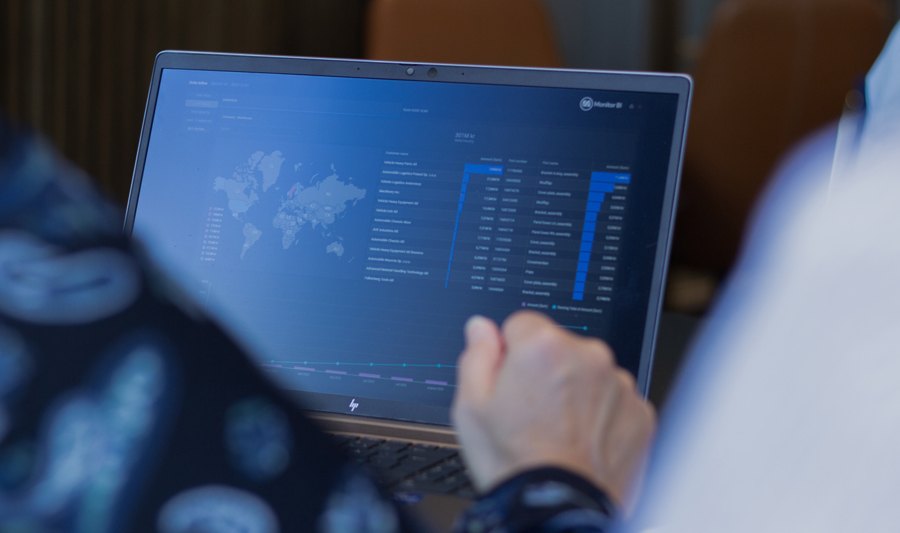Real-Time BI Monitoring: A New Frontier in Maintenance Services
Introduction
In the ever-evolving landscape of modern industries, operational efficiency is more critical than ever. For businesses reliant on machinery and equipment, ensuring the health and functionality of these assets is a vital component of success. Traditional approaches to maintenance—such as reactive or scheduled maintenance—can often result in costly downtime, inefficient resource allocation, and unexpected repair bills. To overcome these limitations, Real-Time Business Intelligence (BI) Monitoring is emerging as a cutting-edge solution that revolutionises maintenance services across various sectors.
Real-time BI monitoring utilizes the continuous flow of data from IoT devices, sensors, and connected equipment to provide up-to-the-minute insights into the condition of machinery and infrastructure. By integrating predictive analytics and advanced machine learning models, businesses can not only respond to issues before they cause significant disruption but can also optimize maintenance schedules, reduce costs, and extend the lifespan of critical assets.
What is Real-Time BI Monitoring?

Real-time BI monitoring continuously collects, analyses, and visualises operational data as it is generated. Unlike traditional BI models, which aggregate and process data periodically, real-time BI offers immediate insights that allow businesses to make data-driven decisions on the spot. In the context of maintenance services, this means constantly tracking the health and performance of equipment, facilities, or assets in real time.
This proactive monitoring system relies on live data from Internet of Things (IoT) devices, sensors, and connected assets. Real-time BI systems process this incoming data using advanced analytics to identify early warning signs of failure, detect inefficiencies, and optimize resource allocation. Maintenance teams are alerted instantly to potential issues, enabling them to act swiftly and prevent unplanned downtime.
The shift from traditional maintenance practices (reactive or scheduled) to proactive, predictive maintenance is where real-time BI monitoring truly shines. Businesses can now anticipate failures before they occur, schedule maintenance only when needed, and continuously monitor the performance of critical machinery.
Key Technologies Behind Real-Time BI Monitoring

To fully understand the potential of real-time BI monitoring, it's important to recognize the technologies that make it possible. These technologies form the backbone of a modern maintenance service system capable of delivering real-time insights.
IoT and Sensors:
IoT devices like vibration sensors, temperature gauges, and pressure meters are placed on machinery or equipment to gather real-time performance data. These sensors collect information on temperature, humidity, vibration levels, and energy consumption.
For example, in an industrial manufacturing plant, vibration sensors on motors can detect misalignments or wear and tear, triggering an early maintenance alert before a breakdown occurs.
Cloud Computing:
Cloud platforms provide the necessary infrastructure for processing and storing large volumes of real-time data. By using cloud-based systems, businesses can scale their monitoring capabilities and ensure that data is accessible remotely, allowing maintenance teams to review performance metrics from anywhere at any time.
Cloud computing also enables easy integration with other business systems (ERP, CMMS, etc.), ensuring that maintenance activities are aligned with broader operational goals.
Advanced Analytics and Artificial Intelligence:
Real-time data is not valuable unless it can be interpreted effectively. Advanced analytics, including machine learning and AI, process this live data to generate actionable insights.
Predictive models use historical data and real-time inputs to forecast potential failures. For instance, AI models can predict when an HVAC system is likely to need a service, based on factors like operating hours and past performance patterns.
Over time, as more data is fed into these systems, their predictions become more accurate, ensuring businesses can implement predictive maintenance that is highly specific to their unique operational conditions.
These technologies combine to form a powerful tool for businesses looking to optimize their maintenance strategies.
Benefits of Real-Time BI Monitoring in Maintenance Services
![]()
Real-time BI monitoring is not just about improving maintenance practices—it's about transforming the entire approach to asset management. Here are the key benefits that organizations can expect from adopting real-time BI for maintenance services:
1. Proactive Maintenance
Traditionally, maintenance operations relied on a reactive model: problems were addressed only when equipment malfunctioned or failed. With real-time BI, businesses shift to a proactive maintenance model. Instead of waiting for a breakdown to occur, equipment is constantly monitored for early signs of wear and tear. This allows for interventions before a failure occurs, reducing the frequency of unplanned downtime.
For instance, a manufacturing plant might use vibration sensors to detect an imbalance in a motor. Real-time BI will alert maintenance staff that the motor requires recalibration, avoiding a full-blown failure that could halt production for hours or even days.
2 Cost Reduction
Real-time BI monitoring helps organizations reduce maintenance costs by optimizing the maintenance process. By moving away from fixed schedules and focusing on equipment health, businesses can allocate resources more efficiently. This eliminates the need for excessive routine checks and costly emergency repairs, which are common in traditional maintenance models.
Predictive maintenance ensures that parts are replaced only when necessary, reducing the cost of replacing components that still have life left in them.
3. Increased Operational Efficiency
With real-time insights into the condition of equipment, maintenance teams can better prioritize their tasks. Instead of responding to random or scheduled maintenance requests, they can focus on addressing the most critical issues at the right time. This improves overall productivity and ensures that equipment is always operating at peak performance.
For example, in a logistics company, fleet vehicles equipped with real-time monitoring systems can be assessed for potential mechanical issues, allowing operators to manage their fleet more effectively by addressing the most pressing maintenance issues first.
4. Extended Equipment Lifespan
Routine and preventative maintenance driven by real-time BI monitoring helps extend the lifespan of expensive assets. By ensuring that machinery runs at optimal conditions, organizations can avoid unnecessary wear and tear and maximize their return on investment in equipment.
Real-World Applications of Real-time BI Monitoring
Real-time BI monitoring is having a profound impact across multiple industries, driving improvements in operational efficiency, cost savings, and risk management.
5. Manufacturing
In the manufacturing sector, real-time BI monitors the performance of machines and production lines. Sensors on critical equipment provide data on temperature, vibration, and overall health. Continuously analyzing this data allows maintenance teams to predict when machines need servicing, preventing breakdowns and maintaining smooth production operations.
For example, a car manufacturer may use real-time monitoring to track the performance of robotic arms used in assembly. If a malfunction is detected early, maintenance staff can intervene before it disrupts the entire production line.
6. Healthcare
Hospitals and healthcare facilities rely on a vast array of medical equipment that needs to be maintained and kept in optimal condition to ensure patient safety. Real-time BI monitoring is used to track the health of machines like MRI scanners, ventilators, and patient monitoring devices. Predictive maintenance alerts can prevent machine failures that could affect patient care.
Real-time data also helps ensure compliance with health regulations, as equipment is monitored for usage patterns and maintenance intervals.
7. Energy Sector
Energy production facilities, such as power plants, use real-time BI to monitor turbines, generators, and other critical infrastructure. By continuously tracking performance indicators like vibration, pressure, and temperature, energy providers can predict failures before they occur, preventing costly downtime and improving the reliability of the energy supply.
Challenges in Implementing Real-Time BI Monitoring
8. Data Overload
The continuous flow of data from IoT sensors and connected devices can quickly overwhelm maintenance teams. The sheer volume of information can lead to alert fatigue, where staff may begin to ignore warnings or miss critical issues amid the noise. To combat this, businesses must ensure that they have robust filtering and prioritization mechanisms in place to help maintenance teams focus on the most critical alerts.
9. Integration with Legacy Systems
Many businesses still use older systems to manage maintenance activities. Integrating real-time BI monitoring with these legacy systems can be complex and costly. Custom solutions or middleware may be required to bridge the gap, and businesses need to allocate resources to ensure smooth integration without disrupting day-to-day operations.
10. Cost of Implementation
The initial cost of setting up IoT sensors, cloud platforms, and advanced analytics tools can be high. For smaller businesses, these costs may be prohibitive. However, the long-term savings from reduced downtime and maintenance costs often justify the investment.
The Future of Real-Time BI in Maintenance Services

The future of real-time BI monitoring in maintenance is poised for exciting developments:
Artificial Intelligence and Machine Learning
The role of AI and machine learning will continue to expand, providing even more accurate predictive analytics. These technologies will enable businesses to predict potential failures with greater precision, ensuring that maintenance activities are conducted at the optimal time, reducing costs and downtime.
Edge Computing
Edge computing will allow for faster processing of data closer to its source. This will reduce latency and improve the speed at which decisions can be made, enabling more immediate responses to emerging issues.
Autonomous Maintenance Systems
In the future, autonomous maintenance systems may emerge that can automatically perform certain maintenance tasks, such as replacing worn-out parts or recalibrating systems, with minimal human intervention. This will further streamline operations and reduce the dependency on manual labour.
Conclusion

Real-time BI monitoring represents a major leap forward in maintenance services, offering a host of benefits, from reducing costs and increasing efficiency to extending the lifespan of critical equipment. While implementing such systems presents challenges, the potential rewards far outweigh the drawbacks. As technology continues to evolve, real-time BI will play an increasingly vital role in ensuring that businesses can operate smoothly, avoid disruptions, and remain competitive in a fast-paced world.







.png)






